Nonprofit Technology & Fundraising Blog
Subscribe to our mailing list

July 29, 2025 | Donor Data, Donor Engagement, Fundraising Operations, Major Donors
Major gift fundraising plays a pivotal role in helping nonprofits increase their impact and secure long-term revenue. From multi-year funding to transformative investments, major donors provide the financial stability and flexibility needed for mission growth.
While every nonprofit’s approach may differ, some best practices consistently deliver results. This blog outlines essential strategies that high-performing nonprofits use to identify, engage, and retain major donors.
Let’s explore eight essential major gift fundraising best practices, organized into three primary categories:
Major gift fundraising focuses on securing large contributions from a relatively small group of committed donors who often generate the majority of your organization’s fundraising revenue. These high-impact gifts typically support strategic priorities like capital projects, new programs, or multi-year initiatives.
Unlike broad-based appeals, major gift fundraising is relationship-driven. It requires research, personalized outreach, and sustained stewardship to build long-term partnerships that fuel growth and sustainability.
“One major gift can be the difference between a nonprofit meeting its goal and that same organization coming up short. Successful nonprofits understand this fact and know the significance of running a top-tier program.” — DonorSearch Major Gift Officer Survival Guide
Major gift fundraising can feel intimidating, but it’s more approachable than many people realize. Let’s clear up a few common myths:
Now that we’ve covered the fundamentals, let’s explore the 8 essential best practices that can help you build or grow your major gift fundraising program.
Major gift fundraising starts with knowing your audience—and that means identifying your most promising prospects.
Prospect screening helps you uncover donors with both the capacity and inclination to give at a high level. By analyzing data like giving history, philanthropic activity, business affiliations, real estate holdings, political contributions, and more, you can zero in on those most likely to invest significantly in your mission.
This is especially critical now, as donor acquisition costs rise and competition for attention intensifies. Incorporating data-driven prospecting into your nonprofit development plan ensures your team spends time cultivating relationships with the right individuals—those who not only qualify as major donors but also show signs of readiness to give. Screenings can reveal valuable engagement signals like past donations, event attendance, and volunteer involvement, helping you prioritize outreach to supporters who are most likely to say yes.
Pro tip: Conduct prospect screenings throughout the year to keep your portfolios current and aligned with your major donor goals.
For example, you can identify top major donor prospects instantly through wealth screening and predictive analytics using the DonorPerfect integration with DonorSearch.
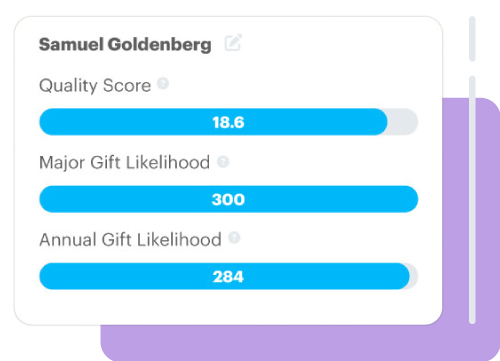
A dedicated staff member, such as a major gifts officer, can help you take your fundraising to the next level, but it’s also possible to build momentum by appointing an internal lead and providing training.
Even if your team is small, someone needs clear ownership of the major gifts pipeline—from identification and cultivation to solicitation and stewardship.
When hiring a fundraiser, prioritize:
The return on this investment can be substantial. A strong major gifts officer may raise their salary or more within the first year, and over time—with the right support and donor base—may generate five to ten times their salary in revenue.
Pro tip: Can’t hire right away? Appoint a lead gift officer internally and provide training. It’s better to build momentum now than wait for a perfect hire.
For example, DonorPerfect allows you to assign and track major gift portfolios with visual dashboards and donor journey mapping tools.
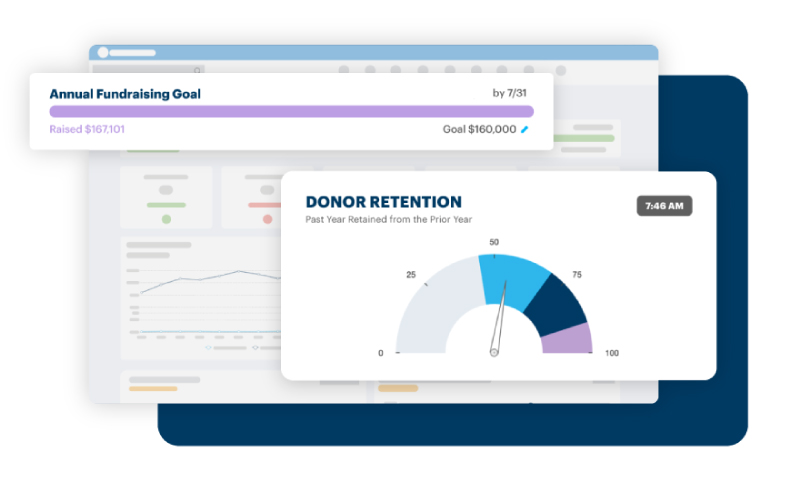
A major gift society is a donor recognition tool and a powerful driver of donor retention and upgraded giving.
By establishing a defined threshold (e.g., $10,000+) and offering tiered benefits like exclusive program updates, early access to impact reports, or VIP event invitations, you give donors a reason to stay engaged and potentially upgrade their giving.
Repeat donors often show a stronger commitment to your mission, and over time, they’re more likely to make transformational gifts that support lasting impact. A giving society not only increases loyalty but also improves your stewardship efficiency and supports long-term major donor engagement.
Pro tip: Include your giving society in your annual fundraising plan—build intentional moments of celebration and engagement throughout the year. Think exclusive updates, personalized recognition, or small-group events that reinforce donor impact and deepen connections.
For example, you can use custom donor groups in DonorPerfect to build tiered giving societies with personalized communications and reports, especially for sharing impact and expressing gratitude throughout the year.
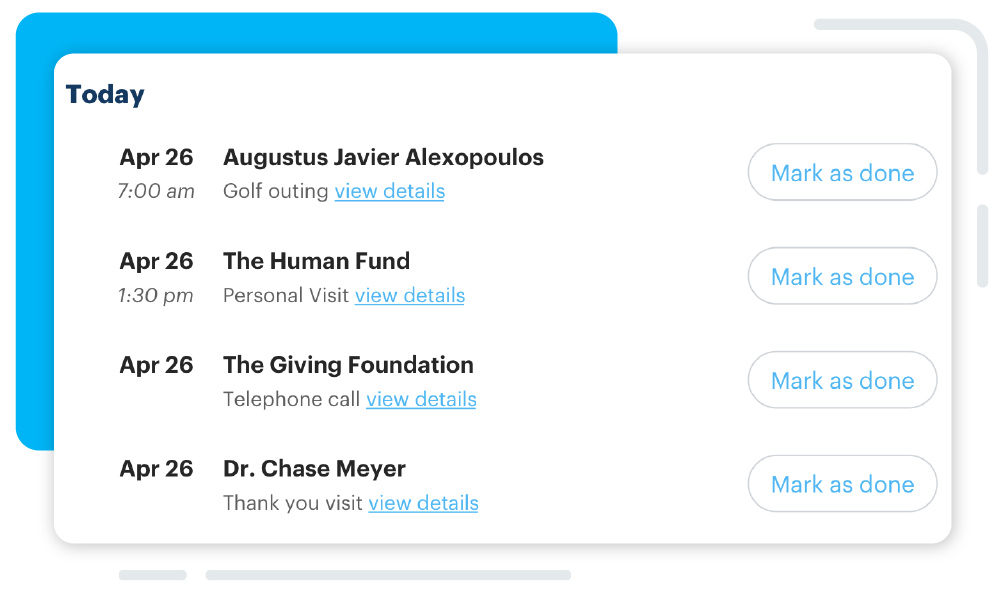
Your board of directors can be a powerful asset in your major gifts fundraising strategy—if you engage them effectively. Start by educating the board on the return on investment (ROI) of major giving, using real data projections from your donor base. Then ask them to lead by example with a personal major gift. This demonstrates confidence in your organization and sets the tone for other donors.
Next, leverage board member networks. Warm introductions, or joining you on solicitation visits with those they know, dramatically increase your success rate in major donor cultivation.
Pro tip: Host a board workshop focused on major donor storytelling and referral techniques. Empower board members with the language and confidence to champion your mission.
Nonprofits use DonorPerfect’s intuitive features to track board giving, manage key relationships, and identify board connections to potential major donors.
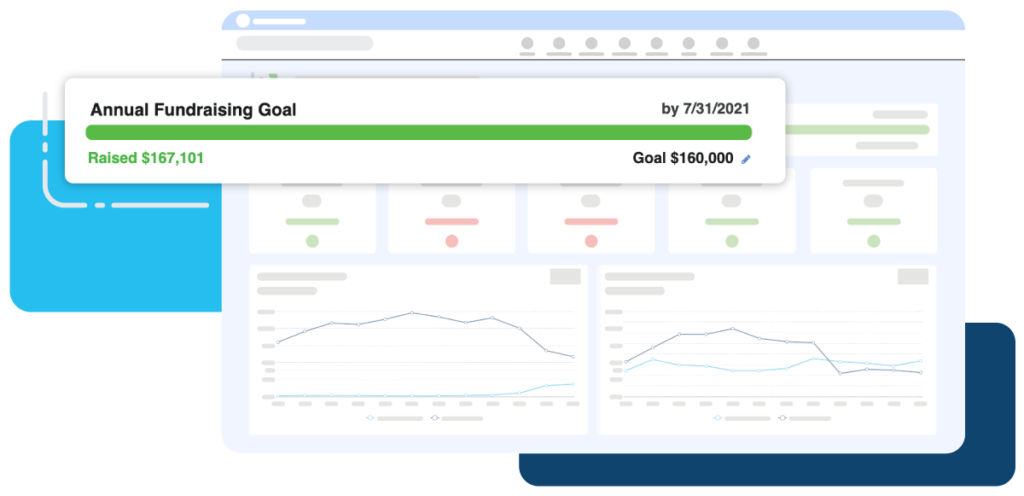
While not all major giving happens at events, thoughtful gatherings play an essential role in deepening donor relationships. Events like luncheons, intimate house gatherings, auctions, behind-the-scenes tours, and impact briefings offer donors:
They also offer your team the chance to build trust in low-pressure environments, while acknowledging donors’ contributions. Are you looking for practical ways to make the most out of attending events? Check out these 6 Tips for Nonprofit Event Networking.
Pro tip: Mix cultivation and stewardship within your event calendar. Not every gathering should include a solicitation! You can manage RSVPs, segment invitations, and follow up with ease using DonorPerfect’s built-in event tools.
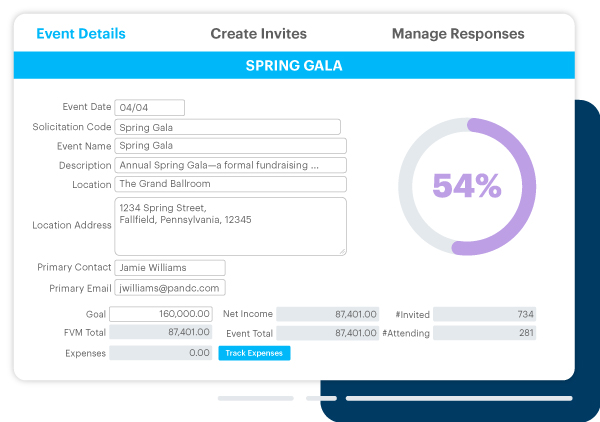
Donors give more when they feel connected, and volunteering offers a powerful way to build that bond. Whether it’s a site visit, campaign planning task force, or strategic committee, volunteering creates shared experience and emotional investment in your mission. It’s also an opportunity for donors to see your work up close, building trust in your operations.
Pro tip: Curate volunteer experiences that align with donor interests and skill sets. High-capacity donors often want to offer more than just money—they want meaningful involvement. For capital campaigns or feasibility studies, engaging top donors early as volunteer advisors can significantly increase participation and giving levels.
For example, you can build custom volunteer experiences and manage your volunteers with ease in DonorPerfect to deepen donor engagement and track involvement across channels.
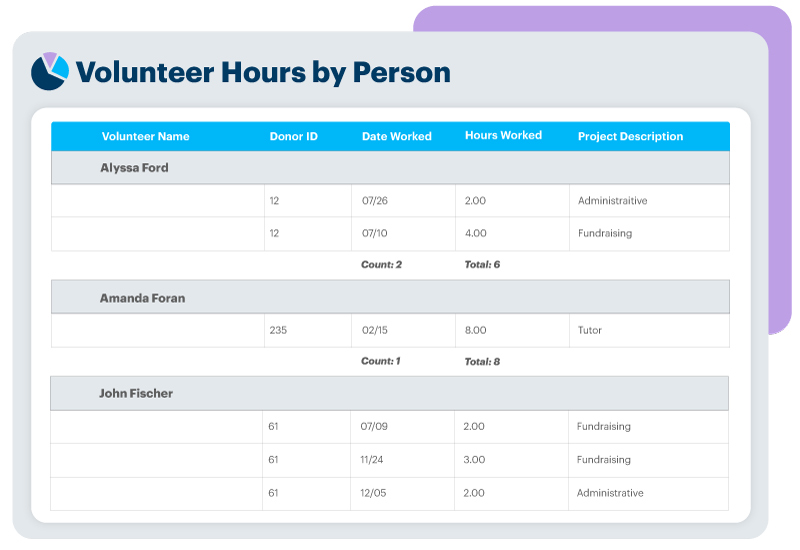
To grow a successful major gifts fundraising program, set up key metrics to measure progress, monitor what’s working, and identify areas for improvement.
Focus on metrics that reflect both the health of your donor pipeline and your overall fundraising outcomes, such as:
Use this data to adjust strategies based on progress towards goals, coach team members, and communicate results to stakeholders.
Pro tip: Benchmark your results annually, and share topline results with your board and top donors. Transparency builds trust and helps tell the story of your fundraising progress.
Are you looking for more information on tracking key fundraising metrics? Check out our blog: How to Track Donor Data & Nonprofit Analytics Using a Fundraising Dashboard.

Major donors want to know their gifts are making a difference, and specifics matter. Major donors are impact-oriented. They want to understand what their gifts fund and what change they create. That’s why it’s essential to communicate the ROI that their gift delivers in clear, specific terms.
Generic thank-you messages aren’t enough. Use what you know about a donor’s values and interests to tailor your messaging. For example, if a donor is passionate about education equity, don’t just say their gift supported students—show how it helped 200 students access laptops, participate in online classes, and improve academic outcomes.
The more specific you are, the more meaningful the gift becomes, and the more likely the donor is to stay engaged and increase their support over time. Fundraising systems like DonorPerfect allow you to use custom reporting tools to share impact updates and ROI by donor, project, or fund.
When you’re ready to make a major gift solicitation, preparation is everything. A clear, confident presentation builds trust and helps donors see the direct impact of their investment.
Before your solicitation meeting, make sure you can communicate:
Being transparent about your goals—and how the donor fits into them—creates a compelling case for support and sets the stage for a strong, long-term partnership.
The most successful major gifts programs build lifelong partnerships rooted in trust, alignment, and shared vision. It takes time, discipline, and strategy to grow a transformational giving program as part of your broader nonprofit development efforts. But with these best practices in place—and the right fundraising tools to support them—you’ll be well on your way to securing the long-term funding your mission needs to thrive.
Want to grow your major gift program with expert tools and support? DonorPerfect’s integrated tools and expert support can help you identify, cultivate, and retain major donors more effectively. Learn more about DonorPerfect fundraising software today.
1. What defines a “major gift” at a mid- to large-sized nonprofit?
2. How can we balance finding new major donors with retaining the ones we already have?
3. What major gift trends should nonprofits know?
Explore DonorPerfect in a free demo
Follow us on social!